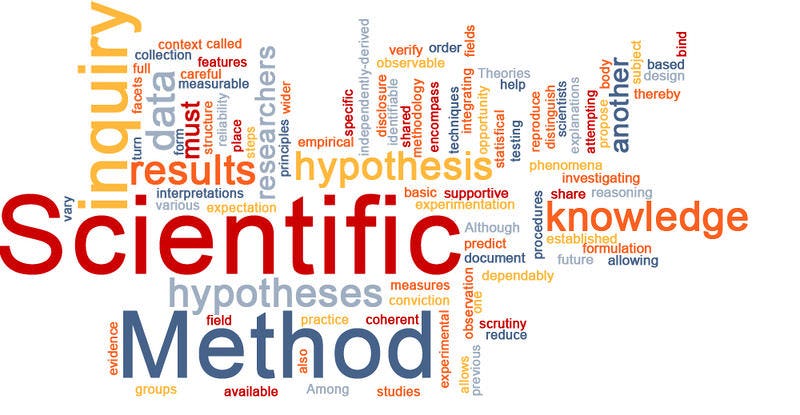Scientific hypotheses, laws, and theories, oh my!
Clearing up some confusion about sciency terms

I’ve lost track of the number of times I’ve heard someone argue, “that’s just a theory” when they want to avoid considering something sciency they would rather just dismiss. Or “one theory is…” when what they are describing a possible explanation for a mystery of the universe or a nagging question they have been pondering, or something they read on the interwebz. Unfortunately, misusing terms can create a roadblock on the path to creating a dialog between groups of people in general. And this is especially true for attempts to pave the way for discussions about science and religious faith. So, I want to clear up some confusion about the meaning of the terms “hypothesis,” “theory,” and “law” as they relate to sciency things. I also want to shed a softer light on the “scientific method.” My hope is that these definitions will improve dialog between scientists and non-scientists1.
A scientific law is a phenomenon that is constantly observed even if we don’t understand how or why it works. To put it another way, a law describes relationships between facts, or basic observations. For example “the law of buttered toast”2 stems from the repeated observation that when dropped, a piece of buttered toast will always land butter side down. Common sciency laws that really exist include the law of gravity, Boyle’s law, and the second law of thermodynamics .
“facts and theories are different things, not rungs in a hierarchy of increasing certainty. Facts are the world’s data. Theories are structures of ideas that explain and interpret facts.”
~Stephen J Gould in Hen’s Teeth and Horse’s Toes, New York: W. W. Norton & Company, 1994, pp. 253-262
A scientific theory is the mechanism behind a repeated observation. For example, germ theory says that diseases are caused by bacteria, viruses, nematodes, or other microscopic pathogens (a.k.a. germs). Another is the theory of plate tectonics which describes the movement of land masses on earth over geological time. The important thing to know is that an idea only gains theory status after oodles of observations, measurements, and evaluations have been collected; experiments have been performed; and common, consistent conclusions have been reached.
A scientific hypothesis is a possible explanation for a phenomenon that is testable using the scientific method which, in spite of what you probably learned in high school science class, is not a formal, stuffy, way of discovering the mysteries of the universe. Actually, the scientific method is something that you do intuitively every day. Personally, I use the scientific method to find my car keys way more often than I’d like. Let me show you:
The problem: my keys are missing.
Hypothesis: I left them on the kitchen table
Experiment: Look on the table for my keys
Result: there are no keys
Conclusion: my keys are not on the kitchen table.
Refined hypothesis: I left them in the pocket of my pants….
Repeat until I actually locate my keys.
The scientific method is also commonly, but unintentionally, used figure out why your car won’t start or even decide what to make for dinner. Can you think of a way you have recently used the scientific method in your daily life?
Ironically, one barrier to science dialog is formally known as the information deficit model that assumes that all conflict and misunderstanding will be cleared up if we can just give people enough information and facts. We are finally figuring out that a lot more is needed to create meaningful dialog than just facts.
Something I just made up based on my repeated observations.



